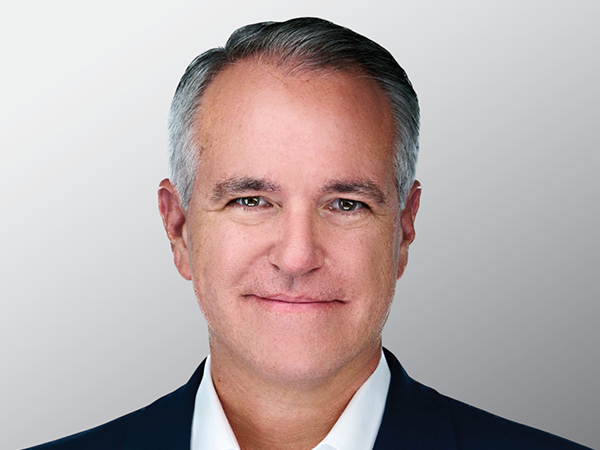For clarity to set in, we must begin with the FDA oncology equivalent of baseball statistics:
- Over the past six years, the agency has approved 75 indications for checkpoint inhibitors, drugs that target the PD-1/PD-L1 proteins.
- The agency has rolled the dice on 35 of these indications, giving them accelerated approvals.
- Now, the results of confirmatory trials required for maintaining accelerated approvals are rolling in, and no benefit has been shown in 10 of these indications.
What’s a regulatory agency to do?
Before you can solve a problem, you have to name it; this is just true. Thus, Richard Pazdur, the FDA cancer czar and the agency’s namer-in-chief, coined the term: “dangling indications.”
“This term represents accelerated approval indications where a required trial did not confirm benefit—hence, this indication is ‘dangling’ between an accelerated approval status and market withdrawal,” Pazdur explained in a conversation with The Cancer Letter earlier this week.
“When this happens, we examine the evidence in support of the original accelerated approval, the circumstances of the confirmatory trial, and the current unmet medical need of patients in this indication. I want to emphasize that a ‘failed’ trial does not mean a ‘failed’ drug.”
A conversation with Pazdur, director of the FDA Oncology Center of Excellence, and Julia Beaver, chief of medical oncology at OCE, appears here / on page X .
Starting late last year, Pazdur et al. engaged in what might be called quiet diplomacy, convincing four drug companies in as many months to voluntarily yank four danglers. With proper pomp, press releases announcing the withdrawals said the indications were being pulled “in consultation with the agency” (The Cancer Letter, March 12, March 5, 2021).
The prevalence of dangling indications was thus reduced by 40%. The remaining 60%, presumably those that weren’t quite so open-and-shut, went to ODAC. (A date with ODAC had to be the or-else in the agency’s behind-the-scenes persuasion tour.)
This was not your ordinary ODAC, but a three-day checkpoint inhibitor marathon that consumed April 27, 28, and 29. You might call it six ODACs for the price of one: subtle as all get-out, if-you-blink-you-miss-it head-spinner of a shindig.
More perspective: FDA has been granting accelerated approvals since 1992, and the agency has conducted three “industry-wide evaluations” (another Pazdurese term of recent coinage) since 2003.
One highlight of that exercise 18 years ago was a single two-day meeting, where seven sponsors regaled ODAC with dispatches from their ongoing confirmatory trials (The Cancer Letter, March 10, 2003; Feb. 11, 2011). At this week’s ODAC, however, the agency focused exclusively on accelerated approval of one class of drugs, in part because of the industry-wide race to develop them.
Now, the score: During the three-day PD-1-o-rama, ODAC nixed one indication and was split on another.
So, conservatively, the dangling checkpoint inhibitor indication problem was cut in half, or—depending on how the agency interprets the split—by 60%. The remaining four indications sailed forth while confirmatory trials continue.
This was not easy. The committee reviewed the original accelerated approvals, the completed confirmatory trials, the treatment landscape, and the potential of other ongoing trials to confirm benefit.
Also—this detail is new—the ODAC was asked to consider whether the indications were still addressing an “unmet medical need.” This is a requirement of the accelerated approval program. Another question asked in the context of checkpoint inhibitors is whether clinical studies in earlier disease settings or in combinations are relevant to the indication for which the drug got its accelerated approval.
PD-1/PD-L1 drugs often get accelerated approvals based on tumor shrinkage and are allowed to keep the indication while conducting confirmatory trials, which usually focus on progression-free or overall survival. Since a massive number of trials are focused on PD-1/PD-L1 drugs, unmet medical need can—woosh—evaporate while the trials are being conducted, FDA officials said in an a conversation with The Cancer Letter and in an editorial published last week in The New England Journal of Medicine.
“One of the advantages of having several drugs studied in near-identical indications—some of the trials positive and others negative—is the opportunity to explore potential reason for these discrepant results between the anti-PD-1/PD-L1 antibodies. Some of the issues include differences in primary endpoints, power calculations, hierarchical statistical testing procedures, trial design, or inability to detect patients most likely to respond,” Pazdur said to The Cancer Letter before the festivities began.
Julia Beaver sets the stage
In her remarks preceding each of the sessions at the three-day ODAC, FDA’s Beaver spelled out the rationale for the agency’s decision to consult the committee:
FDA and the Oncology Center of Excellence continuously evaluate the accelerated approval program to make sure the benefit to patients is maintained and to increase transparency in the future, we may continue public discussions of these evaluations on a more periodic basis.
Over the last six years, there has been an unprecedented level of drug development for the anti-PD1 or anti-PDL1 antibody class with more than 75 indications approved in oncology with 35 accelerated approvals, with development for these indications reflecting a high unmet medical need.
The FDA Oncology Center of Excellence evaluated these accelerated approvals and identified 10 indications for anti-PD-1 and PD-L1 antibodies where accelerated approval had been granted and results from confirmatory trial or trials did not meet their primary efficacy endpoint or only demonstrated a small benefit not deemed clinically meaningful.
While these antibodies have definitive disease activity for specific patients, given the results of the confirmatory studies, the risk benefit calculation for these indications may have changed in the contemporary treatment landscape, and thus warrant further examination.
FDA therefore initiated discussions for these respective indications with the companies, recommending withdrawal or alternatively bringing the indication to a public discussion at this advisory committee.
Four antibody indications in small cell lung cancer and in urothelial carcinoma shown here appropriately choose to voluntarily withdraw their indications in consultation with FDA. It is notable that both the small cell lung cancer and urothelial indications have seen a changing landscape of disease treatment.
Meaning after these accelerated approvals were granted alternative anti-PD-1 or PD-L1 therapies have demonstrated survival benefit either in the same line of therapy or in earlier lines—thus calling into question the benefit of these 4 indications above that of current available therapies. These withdrawals therefore maintain the integrity of the accelerated approval program.
While the four withdrawals were warranted, the remaining six indications that will be discussed during this three-day advisory committee meeting warrant further discussion, and we hope to hear further advice.
In conclusion, accelerated approval provides a tradeoff of expediting approvals of drugs with increased uncertainty.
Oncology has successfully applied the principles of accelerated approval over the last 28 years, making transformative oncology indications available to patients years earlier. The percentage of drugs that do not ultimately confirm clinical benefit should not be viewed as a failure of the program but rather an expected tradeoff to expedite drug development of promising agents for severe and life-threatening diseases like cancer.
However, since the goal of accelerated approval is patient benefit, when post-marketing studies do not meet their primary objective, the drug product should be reevaluated in the context of currently available therapy, and if deemed to no longer benefit patients the accelerated approval indication should be withdrawn.
Therefore, we would like the advisory committee to discuss if the indication should be retained on the market while additional trials are conducted or completed.
ODAC: Keep the trials going for four indications
The agency wasn’t setting up a massacre, Pazdur and Beaver said to The Cancer Letter.
Often, the agency convenes ODACs in order to make the public aware of clinical issues. Also, the committee’s thumbs-up means the initial accelerated approval continues to make sense. So, it’s a win either way.
At the three-day meeting, the committee made the following recommendations:
- ODAC voted 7:2 to continue ongoing trials and keep the accelerated approval for Tecentriq (atezolizumab), in combination with paclitaxel protein-bound, for the treatment of adult patients with unresectable locally advanced or metastatic triple-negative breast cancer whose tumors express PD-L1 (PD-L1 stained tumor-infiltrating immune cells [IC] of any intensity covering ≥1% of the tumor area), as determined by an FDA-approved test.
The agency’s concerns were based on the following:- Accelerated approval based on small progression free survival (PFS) with non-significant overall survival,
- Benefit not verified in confirmatory trial in same disease setting,
- Possible detriment in OS in confirmatory trial
- Alternative/ongoing trials are not in combination with nab-paclitaxel or in same disease setting 1.
- ODAC voted 5:3 to continue ongoing trials and accelerated approval of Keytruda (pembrolizumab) for the treatment of patients with locally advanced or metastatic urothelial carcinoma who are not eligible for cisplatin-containing chemotherapy and whose tumors express PD-L1 (Combined Positive Score [CPS] ≥10) as determined by an FDA-approved test, or in patients who are not eligible for any platinum-containing chemotherapy regardless of PD-L1 status.
The agency’s concerns were based on the following:- Benefit not verified in confirmatory trial in same disease setting,
- OS benefit and regular approval in 2nd line setting for pembrolizumab (KN-045) • Treatment landscape is changed with OS benefit from alternative checkpoint inhibitor in maintenance setting (avelumab),
- Alternative/ongoing trials in different disease setting or population, or design does isolate the effect .
- ODAC voted 10:1 to continue ongoing trials of Tecentriq for the treatment of adult patients with locally advanced or metastatic urothelial carcinoma who are not eligible for cisplatin-containing chemotherapy and whose tumors express PD-L1 (PD-L1 stained tumor-infiltrating immune cells [IC] covering ≥ 5% of the tumor area), as determined by an FDA)-approved test, or are not eligible for any platinum-containing chemotherapy regardless of PD-L1 status.
The agency’s concerns were based on the following:- Benefit not yet verified in confirmatory trial in same disease setting,
- Benefit not verified in 2nd line metastatic setting and indication withdrawn
- Adjuvant trial did not meet primary endpoint,
- Treatment landscape has changed with demonstrated OS benefit from alternative checkpoint inhibitor in maintenance setting
- In a 6:2 vote, ODAC recommended withdrawing the indication for Keytruda for the treatment of patients with recurrent locally advanced or metastatic gastric or gastroesophageal junction adenocarcinoma whose tumors express PD-L1 [Combined Positive Score (CPS) ≥1], as determined by an FDA-approved test, with disease progression on or after two or more prior lines of therapy including fluoropyrimidine- and platinum-containing chemotherapy and if appropriate, HER2/neu-targeted therapy.
The agency’s concerns were based on the following:- Low response rate in third-line setting [13% (11% in known microsatellite stable ,
- Treatment landscape has changed with nivolumab approval in the first-line setting based on improvement in OS,
- Two trials with monotherapy comparisons in the first- and second-line settings did not confirm benefit,
- Ongoing trials will not assess the monotherapy effect.
- ODAC voted 8:0 to continue to keep the accelerated approval of Keytruda for the treatment of patients with hepatocellular carcinoma who have been previously treated with sorafenib while the trials continue. A confirmatory trial is expected to produce final results this summer.
The agency’s concerns were based on the following:- Low response rate of monotherapy in post-sorafenib setting,
- Treatment landscape changed with OS benefit of alternative checkpoint inhibitor (atezolizumab) in combination with bevacizumab in the first-line setting,
- Benefit not confirmed in the same (post-sorafenib) setting in KEYNOTE-240 1
- ODAC split 5:4 on the Opdivo (nivolumab) indication for the treatment of patients with hepatocellular carcinoma who have been previously treated with sorafenib.
The agency’s concerns were based on the following:- Low response rate of monotherapy in post-sorafenib setting,
- Treatment landscape changed with OS benefit of alternative checkpoint inhibitor (atezolizumab) in combination with bevacizumab in the first-line setting,
- Negative monotherapy trial versus sorafenib in the first-line setting,
- The combination indication for nivolumab and ipilimumab will be maintained. The response rate of combination therapy is higher than monotherapy.
The four indications withdrawn before ODAC are:
- Tecentriq in prior-platinum-treated metastatic urothelial carcinoma.
- Keytruda for the treatment of patients with metastatic small cell lung cancer with disease progression on or after platinum-based chemotherapy and at least one other prior line of therapy.
- Imfinzi (durvalumab), sponsored by AstraZeneca, as indicated for previously treated adult patients with locally advanced or metastatic bladder cancer.
- Opdivo for the treatment of patients with small cell lung cancer whose disease has progressed after platinum-based chemotherapy and at least one other line of therapy.
Keytruda in 3rd line gastric cancer
The most interesting discussion focused on the third-line gastric cancer indication of Merck’s pembrolizumab.
The confirmatory trials missed the mark. On top of that, earlier this month, FDA granted a regular approval for Bristol-Myers Squibb’s nivolumab in combination with fluoropyrimidine- and platinum-containing chemotherapy for advanced or metastatic gastric cancer, gastroesophageal junction cancer, and esophageal adenocarcinoma (The Cancer Letter, April 23, 2021).
In the FDA parlance, this is known as “the changing landscape.” With nivolumab on the front line, what’s pembrolizumab accomplishing in the third line?
“We firmly believe that there is a role for checkpoint inhibitors in gastric cancer, in this disease. We believe that it’s in the frontline therapy, where survival has been shown. End of discussion,” Pazdur said at the meeting.
The presence of the dangling accelerated approval in the third line could have unintended consequences. “First of all, will people assume that even if somebody got treated with nivolumab in the first-line therapy, let’s try pembrolizumab in the third-line setting,” Pazdur said. “Well, there’s no data on that, and those patients would really have to be studied, because that’s an entirely different risk/benefit, after one has received a checkpoint inhibitor.
“The other unintended consequence is somebody would say, ‘Well, I have two options here. One is the first-line therapy, and one of the third-line therapy, and they’re both FDA-approved indications. Maybe I’ll choose the third-line therapy.’
“That would be, obviously, wrong, because we have a survival advantage shown in the first-line of therapy. And we have no advantage other than a small response rate demonstrated in the third-line therapy. It is incumbent upon us and the integrity of this program that when we have an accelerated approval, and they have failed to demonstrate confirmatory trials, that we take a look at [whether we should] continue this indication. We have to ask ourselves the fundamental question: ‘Would we grant this indication at this time?’”
Merck officials and the company’s consultants said the number of third-line gastric cancer patients in the U.S. who are eligible for pembrolizumab is small and likely to dwindle as patients receive a checkpoint inhibitor in the front line.
“It’s been a wonderful year. We’ve got first-line indications, but there will be doctors that aren’t aware of the indication, and patients can go through their treatment cycles and make it to the third line without ever having a checkpoint inhibitor. What’s the population we’re talking about—2,200 patients,” said Ronan Kelly, director of oncology at the Charles A. Sammons Cancer Center and the W.W. Caruth, Jr. Chair in Immunology at Baylor University Medical Center Dallas.
“If you then break that 2,200, then it’s a 57% for CPS greater than one, you are looking at just over a thousand. Let’s give those patients a chance in the third line, even if they’ve missed out on the first-line indication, because it’s so new. I don’t think that the company is thinking indefinite third-line approval, but for the foreseeable future, my concern would be if those patients don’t have access to that drug.”
Pazdur said Merck’s marketing department has the capability to inform physicians about the first-line approval of a competing drug. “To keep an indication on the market, because you don’t believe that physicians will be educated on this is not a really unbeatable argument to me,” Pazdur said.
Third-line patients benefiting from the pembrolizumab should be able to continue to receive it, Pazdur said.
“We have a special program to walk people through expanded access, facilitating this process,” Pazdur said. “I’m sure if Merck is concerned about the welfare of the patients, they’d be happy to get the drug free to them.”
The committee voted 6:2 to withdraw the indication.
ODAC split on nivolumab in HCC
The discussion of the indications for nivolumab in hepatocellular carcinoma was another highlight of the meeting.
Bristol-Myers Squibb has two indications—nivolumab in combination with ipilimumab (Yervoy), and nivolumab alone.
The nivolumab monotherapy indication has failed in a confirmatory test.
Making a case for keeping the monotherapy indication, BMS argued that it should be retained as an option for patients who are unable to tolerate the combination.
This argument set off a volley of questions from Pazdur:
Pazdur: Obviously, anyone should give a patient the combination, because it has a higher response rate.
If you’re advocating that there are some patients that cannot tolerate it—and I firmly believe there are, believe me I do—were those patients studied and what is the response rate here?
That’s a fair question to ask. You’re asking us really, to give you a new indication here, for patients that cannot tolerate ipi/nivo; right?
Ian M. Waxman [development lead, Gastrointestinal Oncology, BMS]: So, I think the eligibility criteria in both studies of the monotherapy study [CheckMate]-040 and -459, as well as the combination study 90W, are kept broad enough to allow the physician to make decisions about which patients they think fit well into each one. I will ask Dr. El-Khoueiry to provide his thoughts here.
Pazdur: I want to know what the response rate is in this patient population that cannot tolerate nivo and ipi in combination. You’re asking for that indication.
Waxman: Right. So we don’t have those exact data in front of us today.
Pazdur: Don’t you think you should? If we’re going to grant that indication?
Waxman: What we do know is how QE data, which is representative of those less fit patients, who would not be getting ipi-nivo, but would be getting the monotherapy, and in that population, can I ask Dr. El-Khoueiry [associate professor of clinical medicine, Keck School of Medicine CISO Chair, USC Norris Comprehensive Cancer Center] to talk about the types of results that he has seen.
Pazdur: I am not interested in personal observations, I’m interested in the data that you have, not anecdotal experience.
You’re advocating for a new indication for patients who cannot tolerate the combination. Please provide me the response rate for those patients, from your data pool, the data that you’ve studied—not anecdotal information.
Waxman: So, I’d like to respond to that… We do have patients included in the [CheckMate]-040 and -459 study who would not have been good candidates for ipi/nivo. We do not have data necessarily analyzed specifically in those subgroups to share today.
Pazdur: Generally, the practice of medicine would allow people to lower doses.
We could go down multiple different routes here of giving people multiple different indications for people that think that they cannot tolerate a therapy. And I realize that there are people that cannot tolerate that combination, because it probably is more toxic to some people.
However, what’s the response rate in that population, because people have a right to know that if that’s going to remain on the market? That population has to be studied.
We cannot make up an indication on the fly.
Waxman: I think the data that are quite relevant are the safety data, and we know that there’s a side effect associated with ipi/nivo that is just not going to be appropriate for many second-line patients.
Pazdur: But what is the efficacy data, Dr. Waxman? That’s what I am after. It’s a risk-benefit analysis in making a regulatory decision. What is the response rate?
You are asking us to change the indication, basically, if it remains on the market. And usually what is done for patients that can’t tolerate a given regimen—[that’s] the practice of medicine, not a regulatory decision. The practice of medicine is to reduce the dose. That falls into the practice of medicine, not the new indication.
Waxman: We’re not asking for a new indication in any way. We are asking that this indication remain…
Pazdur: By the virtue of this discussion, you are asking for a new indication.
Why would somebody maintain this indication? Why would somebody want to take a single agent nivolumab when you have much higher response rate [with ipi/nivo]?
Who are those people? And then, what is the efficacy in that population?
People would have a right to know that. I think you can’t answer my question. Thank you…
Mathias Hukkelhoven [senior vice president, Global Regulatory and Safety Sciences, BMS]: This is Mathias Hukkelhoven, from BMS. Let me be very clear that we are not asking here for a new indication.
Pazdur: Well, I am asking! I’m asking if it remains on the market. Because that’s the argument that you’re making here.
Hukkelhoven: No, I think it’s up to the physician to determine whether a patient would be most suitable to receive monotherapy or a combination therapy. What we are asking is to consider the second-line indication to retain for the monotherapy.
Pazdur: And I want to know what the response rate is for those patients that can’t tolerate it.
It’s a risk-benefit decision, and a physician needs to know what the efficacy is in this, if that’s different than the indication.
We might consider writing the indication differently; we certainly could do that. But what would be the efficacy data?
I think that data does not exist. So, let’s just bring this confrontation to a close.











